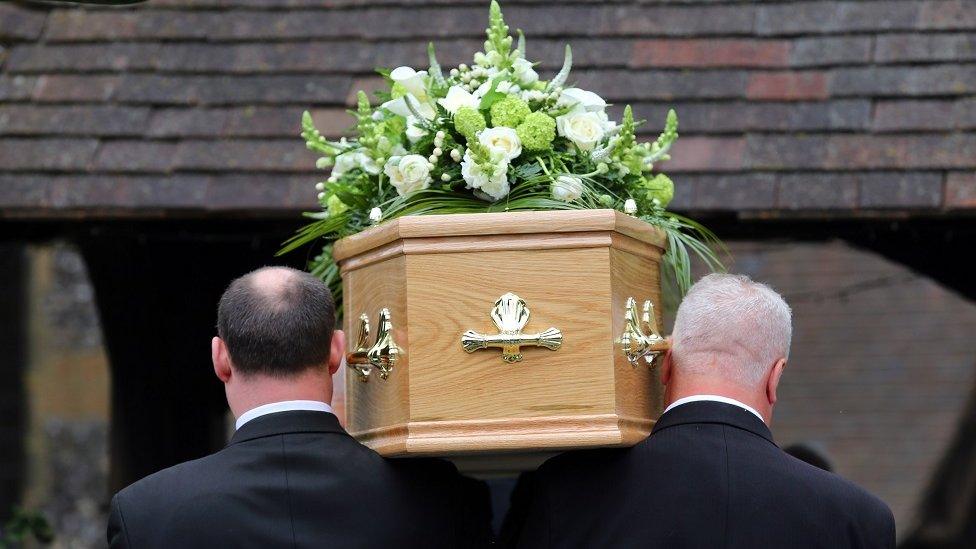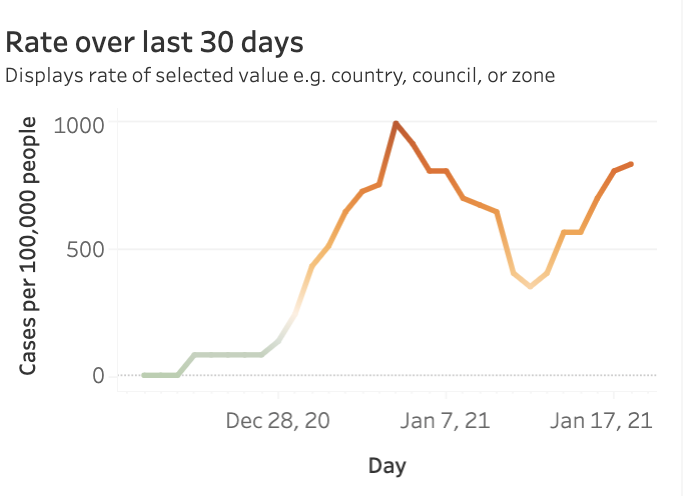Covid in Scotland data: What's happening in the community?
- Published
More data than ever before is available about how coronavirus has affected individual neighbourhoods across Scotland. From case levels, to deaths, we can now drill down and analyse how these 1,279 communities have been impacted. Here are six things we've learned from the latest batch of figures.
1. The neighbourhood with the highest death rate
One in every 100 people has died from coronavirus in the Edinburgh neighbourhood of Liberton West.
This is the highest death rate in any of the 1,279 intermediate zones across Scotland.
These zones are the statistical small geographical areas designed to contain a population of between 2,500 and 6,000 household residents.

It is one of the least deprived parts of Edinburgh and its high level contrasts with the relatively low figures of neighbouring Liberton East where there have been five deaths.
However, a single care home - which saw 19 deaths linked to Covid - feeds into the 36 fatalities recorded in the area.

2. The deprivation factor
After Liberton West, the next three zones with the highest death rates are all in the most deprived parts of the country.
Burnbank South (901 deaths per 100,000 people), Drumchapel South (787), and Irvine Fullarton (766) are all in the 20% most deprived areas of Scotland.
This new data appears to corroborate an academic study from last year that argued those living in the poorest areas were more likely to die or be admitted to ICU.
3. Average deaths
Nearly a quarter of all the 6,834 coronavirus-related deaths reported in 2020 were in the most deprived neighbourhoods in Scotland.
On average seven people died in one of these zones from coronavirus, compared with five in the most affluent areas;
4. December increases
December saw huge rises in death figures for a number of zones across Scotland.
Between 30 November and New Year's Eve, deaths jumped by 1900% in Glenrothes Woodside (Fife), by 1300% in Crathes (Aberdeenshire), and 900% in Stonehaven North (Aberdeenshire).
The average national increase during this period was 27%.
5. New coronavirus hotspot
While the number of new positive cases appears to be decreasing overall across Scotland, an interactive dashboard, external shows there are still notable hotspots like Barra and South Uist.

This Western Isles zone had not reported any new cases for the 12 weeks before 6 January.
The community now has the highest case rate in Scotland with 37 new cases in the last days - that's 1.2 cases per 100 people.
As a result Barra was moved into level four this week.
6. Localised 'third waves'
The latest Public Health Scotland data also shows the resurgence of high rates in some Scottish zones such as Milton East (Glasgow), and Langholm and Eskdale (Dumfries and Galloway).
Following a brief decline the dashboard shows the latter neighbourhood had a higher rate on 17 January than it did on 6 January.

New data appears to show a new wave of cases in Langholm and Eskdale